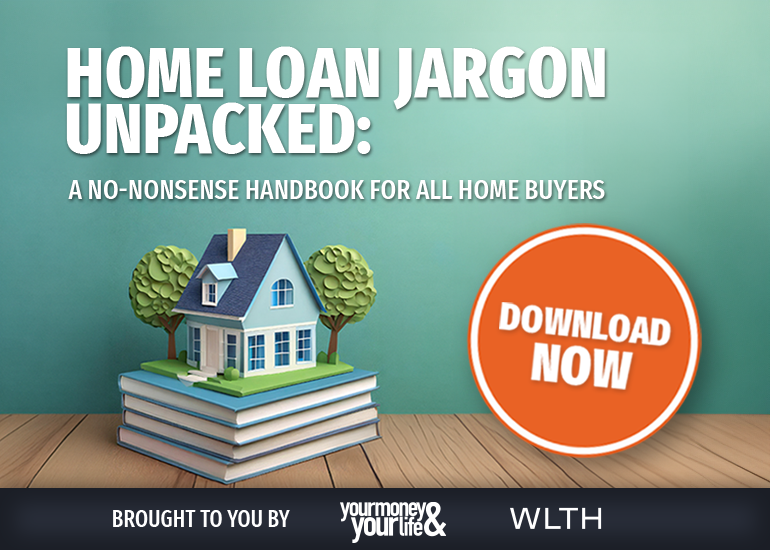- Your Money & Your Life
- Posts
- We can’t be blamed for fuelling inflation + learn from the rich
We can’t be blamed for fuelling inflation + learn from the rich
My Money Digest - 6 May 2024

Greetings from London,
Apologies for missing my usual Friday newsletter delivery last week. I’ll put it down to a time difference mix up.
Libby and I are visiting our youngest daughter Georgie who is expecting her first child in August (and grandchild #9 for us). Apart from pram shopping we also saw the incredible Sarah Snook in her one-woman stage show The Picture of Dorian Gray. Just a remarkable performance from the Adelaide-born star of Succession.
But last week was also an action-packed week when it comes to all things money. In this newsletter:
Retail sales slump… we can’t be blamed for fuelling inflation.
The future of interest rates and a change in forecasts.
Adelaide and Perth property values set to overtake Melbourne.
The unbelievable surge in the cost of building a home.
What we can learn from the money habits of the rich.
How grandparents help their adult kids financially.

Australian consumers are doing the right thing and not causing inflation
After the disappointing higher than expected CPI figures last week, there’s more evidence this week that Australian consumers are doing the right thing in the battle against inflation. They have been asked to tighten their belts and they are doing exactly that.
Retail spending actually fell in March, with sales down 0.4 per cent, following a downwardly revised 0.2 per cent increase in February. Analysts had expected a 0.2 per cent lift in retail trade.
If you exclude the COVID period, retail sales are growing at the weakest pace on record. And it looks set to stay that way: very weak consumer sentiment figures show shoppers are very concerned about the impact of high inflation and higher-for-longer interest rates.
For March, the largest falls were recorded in discretionary spending on clothing, which fell by 4.3 per cent; department stores, which dropped 1.6 per cent; and household goods, which were down 1.4 per cent.
The two states with the largest populations – and biggest mortgage sizes – also saw the biggest declines in spending activity; spending fell 1.1 per cent in NSW and 0.8 per cent in Victoria.

CommBank pushes back its forecast for rate cuts
The Commonwealth Bank economists have been among the most optimistic when it comes to expected interest rate falls and had been expecting the first cut to come in September. But following the last week’s March quarter CPI figure they’ve pushed back that forecast cut to November and expect that to be the only move this calendar year, saying:
“The near-term risk sits with an interest rate hike. But we expect the RBA to be on hold over the next six months given the economy is still contracting on a per capita basis, inflation is forecast to fall further and the labour market is anticipated to loosen.
“… incredibly strong net overseas immigration has put upward pressure on some components of the CPI basket. This has made the RBA’s task of returning inflation to target more difficult.
“We now see a more elongated and conservative easing cycle than previously expected. Our base case sees the cash rate gradually cut from November 2024 to reach 3.10 per cent at end 2025 (a level we believe is just above neutral).”
But Judo Bank’s Warren Hogan fears three interest rate HIKES this year
As you’d expect, the ramifications of the recent disappointing CPI figures are still a hot topic. Warren Hogan is the chief economist at Judo Bank and someone I have long admired. He is forecasting the RBA could raise the cash rate 0.75 per cent by November if we don’t make progress on reducing inflation.
That could lift the cash rate to 5.1 per cent by the close of 2024.
I had the team at Compare the Market (where I am Economic Director) crunch the numbers to understand what a 0.75 per cent increase for borrowers would look like if lenders were to pass on three 0.25 per cent rate hikes before the end of the year.
Such a move could add $374 to the monthly repayments of someone with a $750,000 loan.

Source: Compare the Market
Any further rate hikes would come as an enormous blow to families who had been holding out for reductions this year. If rates were to rise again, it would be a very tough end to the year for anyone who is already experiencing mortgage stress.
There's a whole generation of borrowers who have never experienced rates this high, but also have sizeable debts due to the steep rise in house prices since the pandemic.
The RBA has been warning that inflation has been stickier than expected, so homeowners really can’t bank on interest rates coming down any time soon.
The message is clear: don’t wait for the RBA to move on rates. Start comparing home loans now and see if you can create your own rate cut by switching to a better offer.

Melbourne property values set to be overtaken by Adelaide (and maybe Perth)
Residential property values keep charging ahead with CoreLogic’s national Home Value Index (HVI) rising 0.6 per cent in April – a similar pace of gains to those recorded in both February and March.
It’s the 15th consecutive month of increases, with housing values up 11.1 per cent, or approximately $78,000 since the trough in January last year.
Mid-sized capital cities continue to lead the pace of growth. Perth remains at the top of the growth charts with a 2 per cent rise in April, followed by Adelaide at 1.3 per cent and Brisbane at 0.9 per cent.
Sydney value (+0.4%) has held reasonably firm over the past three months, while Melbourne’s market (-0.1 per cent) has broadly stabilised after recording a subtle -0.8 per cent dip over the three months to January.

Source: CoreLogic
Have a look at the median values of the capital cities. Brisbane median values, for the first time, overtook Melbourne at the start of the year. Now, with the pace of growth, Adelaide is on the brink of jumping to be the third most valuable market… and Perth is even within reach of overtaking Melbourne values.
Now that would be pretty remarkable if Melbourne dropped to fourth on the median value list. Good for Victorian first home buyers, though.
Unsurprisingly, rents also charged higher by 0.8 per cent in April… only a slightly lower rate of growth relative to February and March.
Rents are one of the main drivers of inflation and will remain that way for some time to come.
Is this the reason behind the housing crisis?
Take a look at the cost of housing construction since the end of lockdowns compared with the increase in housing values. It has been much better value to buy an existing house than to build one.

This week building approvals rose 1.9 per cent in March, but in trend terms approvals are 7.3 per cent lower over the year.
In trend terms, private houses are 2.9 per cent higher through the year but multi unit dwellings are 23.7 per cent lower, highlighting a now clear divergence between the two.
The number of approvals over the past year were the lowest for over 11 years, with both new detached house and higher density apartment consents around the lowest since 2012. This has implications for home building material companies and building/construction companies more generally.
Higher construction costs continue to weigh on approvals, pointing to a significant underbuild, even with overseas migration levels beginning to slow.
The record value of renovations suggest that many Aussies have decided to stay put, rather than move. They’re getting approvals for kitchens, bathrooms, and perhaps extensions to accommodate older relatives or those looking for Airbnb-type of accommodation.

8 ways wealthy people stay rich (and get richer)
There’s a difference between having a lot of money and being truly wealthy.
Paul Sullivan, author of The Thin Green Line: The Money Secrets of the Super Wealthy, puts it concisely: wealthy people don’t just have money, they know how to protect and grow their wealth as well.
This security requires having a full understanding and appreciation of their finances, not just a knack for lavish spending.
The good news is the rest of us can learn from the money habits of these super wealthy people. Incorporating them into our own lives means we’ll hopefully get there ourselves a little faster.
Here are eight money lessons we can learn from the wealthy.
1. They create wealth
Flick through the Australian’s Rich List or Young Rich List on any given year and you’ll notice the majority of entrants are in the business of wealth creation.
Maybe they started their own business, had an amazing idea or are at the pinnacle of their field.
The lesson here is that these people have given it a go and as a result are able to generate their own income and assets to grow their overall wealth.
2. They take smart risks…
Wealthy people understand that there is no reward without risk.
Of course, you could always win the lottery, but you could also get struck by lightning. It’s not something you want to rely on.
So whether it’s borrowing money to grow a business or investing in income generating assets over the long-term, rich people are comfortable with taking on a reasonable level of risk to generate an above average return.
3. …But they do their homework
While the wealthy are happy to take a risk, they do their homework carefully before making a move.
They put in the time and effort to ensure they have every base covered, and they’re not emotional about it. If the deal doesn’t stack up, they’ll just walk away.
4. They’re not afraid of failure
Gerry Harvey once said to me, “You’ve never been in business until you’ve been to the brink, looked over the cliff, learnt the lesson and then stepped back.”
Great advice. We thought he was just being grumpy until it happened to us and we realised how insightful he is.
5. They’re frugal
This one always stumps people. Aren’t rich people constantly splurging on designer watches, eating out and first-class flights? Nope.
It’s much more likely that they’re watching every dollar that goes in and out like a hawk: it’s how they got so rich in the first place (and why they’ll stay that way).
According to research Paul Sullivan completed with financial psychologist Brad Klontz, the richest one per cent eats out 30 per cent less than an average wealthy person, and also saves 30 per cent more for retirement.
Frugal and conservative decisions like these are a way of life for wealthy people and extend into all aspects of their finances.
6. They work hard (really hard) …
Self-made people know from experience that one of the surest ways of rising above the rest is working harder than everyone else.
There’s no way around it. In almost any field, if you’re looking for work-life balance and reasonable hours then chances are you’re not going to be striking it rich.
So if you’re looking to earn lots of money, get ready to make some sacrifices.
7. …And drive a hard bargain
Most wealthy people are born negotiators who want the very best deal in every situation, and are prepared to haggle to get it.
They don’t get embarrassed about pushing too hard on a purchase and are relentless in getting the best deal on everything they can.
8. Finally, they keep their feet on the ground
We’re big believers that the richest people are those with a great family around them, not just a lot of money in the bank. In our experience the “wannabes” are usually the pains in the backside while those who have made it are terrific people.
After all, you can always earn more money, but family, friends and values you just can’t buy.

How grandparents are helping with the cost of bringing up kids
Baby boomers are often blamed for today’s inflated house prices but they’re the unsung heroes of today’s cost-of-living crisis – helping their offspring carry the cost of childcare, clothes and essentials, according to new Compare the Market research.
Almost three-quarters of Australian grandparents surveyed said they had been supporting their family financially, with 31 per cent gifting money and providing childcare free of charge.
Some other top ways they care for their kids and grandkids is by:
Purchasing clothes, toys and essentials (31 per cent)
Cooking for them (20 per cent)
Lending money (13 per cent)
Contributing to household bills (9 per cent)
Helping with property purchases (9 per cent)
The data also showed that 7 per cent contributed towards the cost of school and daycare, and a further 7 per cent had helped their kids or grandchildren buy a car.
Only a quarter of grandparents said they hadn’t been helping their family with living costs.

Source: Compare the Market. Notes: Survey of 1010 adult Australians conducted in March 2024. Survey was multiple choice, so respondents could select multiple answers.
This is living proof that grandparents are the unsung heroes of our generation. Baby Boomers have been getting a bad rap in the media for aiding inflation and spending up big. But in reality, 75 per cent of grandparents are helping ease the cost-of-living crisis and are chipping in to help their kids and grandkids in some way.
Times are tough and many Australian households are really struggling right now, especially with the increased cost of housing, food and fuel. Compare the Market’s data follows a recent report from the Australian Competition and Consumer Commission (ACCC), which found childcare fees rose by 22.8 per cent between 2018 and 2022, compared to an average of 6.2 per cent for other developed nations.
The cost of daycare has absolutely exploded out of the water, so if a family member can provide care for free, or even at a reduced rate, it really does go a long way.
Childcare costs can vary from $70 to $200 per day in and around Australia. Let’s assume the cost of daycare is $150 per day. If grandparents are providing free care once a week for 48 weeks of the year – that could be a $7,200 back in your pocket. It could be even more for multiple children.
For some people, it might mean being able to go on a weekend getaway with the family. For others, it might mean being able to keep on top of all their bills without going into debt.
In our family Libby looks after our two toddler grandchildren on separate days to help ease the cost of childcare. I worked out childcare is more expensive than the cost of educating a Year 12 student at a private school. I know there are government subsidies but the cost is enormous when you consider what you’re paying using after-tax dollars.



